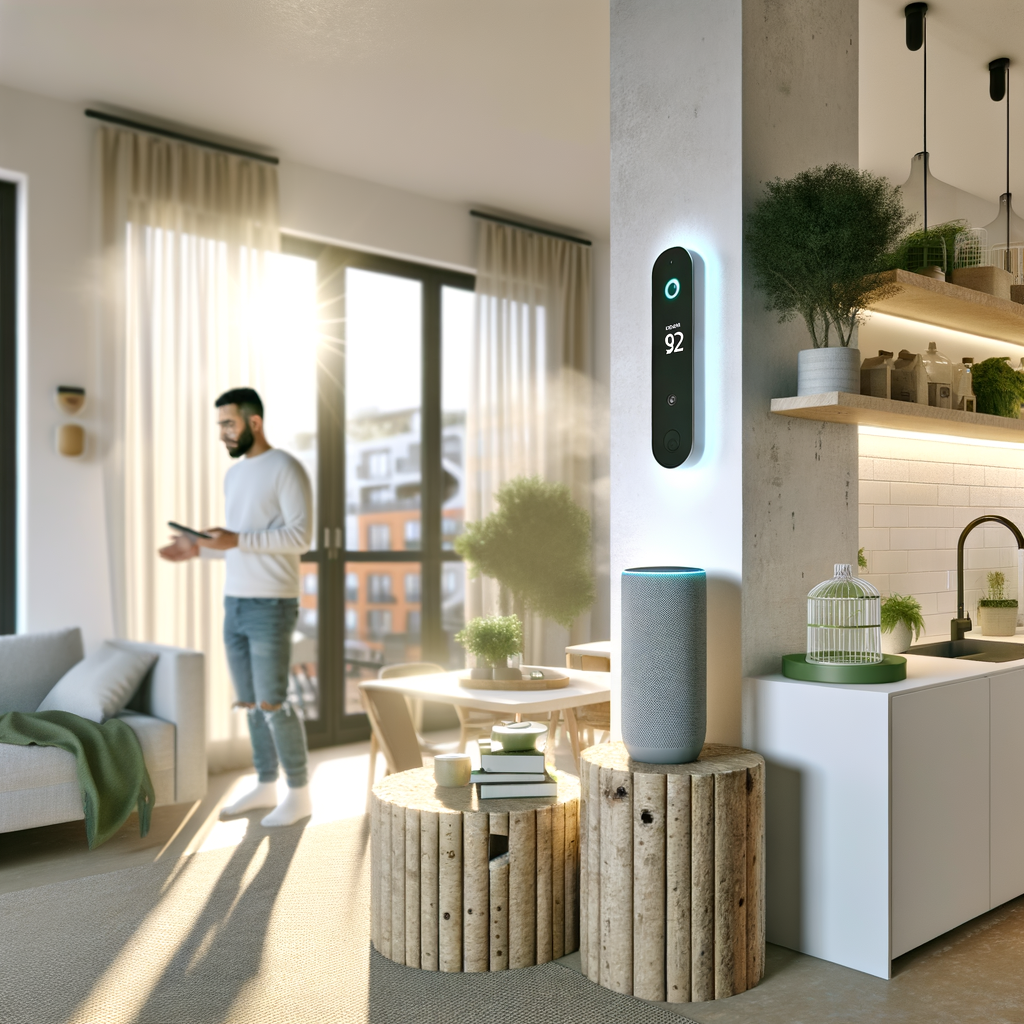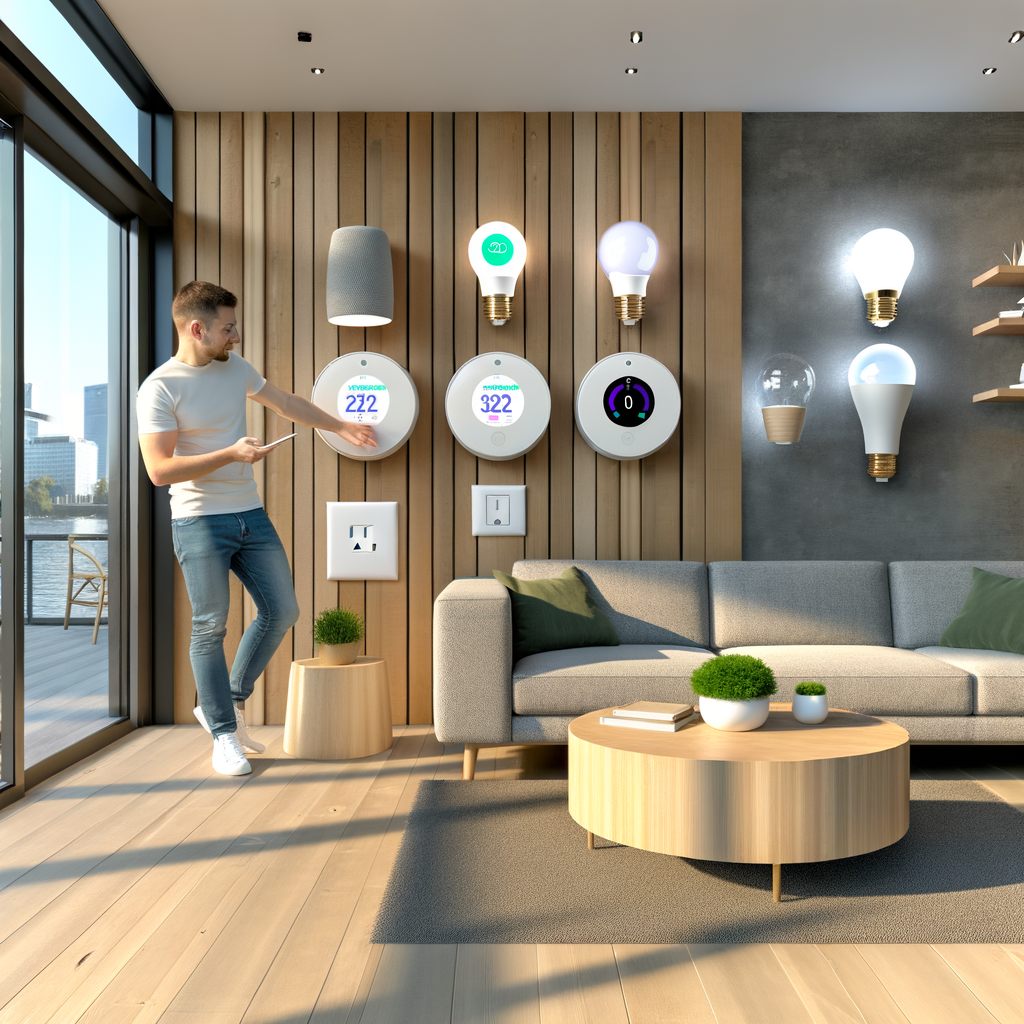Myth-Busting Smart Homes: 7 Misconceptions Renters Have About Eco-Friendly Tech
Smart home technology is transforming the way we live, work, and interact with our living spaces. While homeowners are often quick to embrace eco-friendly tech, renters can be hesitant. Misconceptions about cost, complexity, compatibility, and restrictions persist. But are these concerns justified? Let’s dive into the seven biggest myths about smart homes for renters and set the record straight. Along the way, we’ll offer practical advice and solutions to help you create an energy-efficient, smart rental—without sacrificing your deposit.
1. Myth: Smart Home Tech Requires Permanent Installation
Many renters assume smart home upgrades mean drilling holes, rewiring systems, or making changes that landlords won’t allow. This simply isn’t true for most modern, eco-friendly devices.
Reality: Most Smart Devices Are Portable & Rent-Friendly
- No drills needed: Many smart products are plug-and-play or use adhesive strips.
- Easy set-up & removal: Devices like smart plugs, bulbs, and speakers can be installed and uninstalled without a trace.
- Wi-Fi or Bluetooth connectivity: No need for hardwiring into your apartment’s electrical system.
Actionable Advice:
- Look for devices labeled as “renter-friendly” or “portable.”
- Before purchasing, check that set-up instructions do not include permanent mounting.
- If needed, save original outlet covers or switch plates for easy restoration when you move out.
2. Myth: Smart Tech Is Expensive—Especially For Short-Term Renters
One of the greatest concerns for renters and eco-conscious folks is the upfront cost. Why invest if you won’t stay long?
Reality: Smart Can Start Small—And Save Money Fast!
- Entry-level options: Smart plugs or bulbs often cost less than $25 and can be moved from home to home.
- Real energy savings: Smart thermostats and lights reduce utility bills, often paying for themselves within a year or less.
- Device bundles: Starter kits offer multiple eco-friendly devices at a discount, making it even cheaper to begin.
Actionable Advice:
- Start with one or two devices and gradually expand your system as your budget allows.
- Track your energy usage (many smart apps provide reports) to see savings in real-time.
- Take your devices with you when you move—your investment goes wherever you go.
3. Myth: Smart Homes Are Just for Tech Enthusiasts
Some renters believe smart tech is too complicated and only appeals to tech-savvy individuals. But manufacturers have prioritized user-friendly experiences that are intuitive and quick to learn.
Reality: Modern Devices Are Designed For Everyone
- Simple set-up: Most smart products guide you through app-based onboarding step by step.
- Voice assistant compatibility: Control your home using natural speech via Amazon Alexa, Google Assistant, or Apple HomeKit.
- Easy automation: Set lighting schedules, temperature adjustments, or automatic shutdowns with a few taps.
Actionable Advice:
- Choose products with high ratings for ease-of-use and strong customer support.
- Start with basic automations (like scheduled lights) and experiment as you gain confidence.
- Review video tutorials or app demos online before you buy to see how straightforward it can be.
4. Myth: Smart Eco-Friendly Devices Won’t Work in Older Apartments
Not all renters enjoy new construction with the latest wiring and equipment. Many worry that vintage or older apartments are incompatible with smart devices, leaving sustainability out of reach.
Reality: Most Smart Devices Are Universally Compatible
- All you need is Wi-Fi: Nearly all smart devices only require a Wi-Fi signal and a standard outlet.
- Adaptable bulbs and plugs: Smart bulbs fit into existing sockets, and smart plugs work with most standard outlets.
- No hub required: Many options connect directly to your phone, with no need for a complex setup.
Actionable Advice:
- Test your Wi-Fi coverage in rooms you plan to upgrade; range extenders may help in larger spaces.
- If outlets are outdated, use plug-in adapters or check with your landlord about upgrading for safety and compatibility.
- Opt for “hubless” smart devices for the simplest setup.
5. Myth: Landlords Will Say No to Eco-Friendly Upgrades
Another common belief is that any smart or energy-saving change will be viewed as risky or unwelcome by property managers. This assumption stops many renters from even asking.
Reality: Many Landlords Welcome Temporary, Non-Damaging Improvements
- Win-win benefits: Eco-friendly tech usually reduces wear on existing fixtures and lowers energy bills—often benefiting the landlord, too.
- Non-permanent solutions: Products that don’t require drilling or hardwiring are generally acceptable.
- Open communication: Many landlords will permit smart thermostats or security cameras as long as changes are reversible.
Actionable Advice:
- Always ask permission before making any changes, and describe exactly how the installation and removal works.
- Offer to reinstall original hardware upon move-out to reassure your landlord.
- Emphasize the eco-friendly and cost-saving aspects—they may even want to keep the upgrades!
6. Myth: Smart Devices Compromise Your Privacy and Security
Headlines about smart cameras or hacked devices have made some renters skeptical. While it’s smart to be cautious, the reality is much less scary.
Reality: Modern Smart Devices Offer Robust Privacy Controls
- Account control: You decide which devices have microphones or cameras and customize what data is shared.
- Guest networks: Connect your devices to a guest Wi-Fi network to keep your main network safe.
- App-based security: Most brands offer frequent security updates and easy-to-adjust privacy settings.
Actionable Advice:
- Only buy from reputable brands with established security practices.
- Regularly update device firmware and use strong, unique passwords for all smart home apps.
- Read and adjust privacy settings—the right combination lets you keep convenience without sacrificing safety.
7. Myth: Smart Homes Aren’t “Truly” Eco-Friendly For Renters
Some renters have heard that smart tech is just “another gadget”—not a meaningful eco-friendly solution. But the environmental benefits of even a few small upgrades are immense.
Reality: Smart Homes Dramatically Reduce Waste and Energy Use
- Automation slashes waste: Devices like smart thermostats and lights ensure you’re never using energy when you don’t need it.
- Precise tracking: Many apps show power usage in real-time, empowering you to develop greener habits.
- Easy wins for any renter: Even modest upgrades—like LED smart bulbs—can reduce energy use by up to 80% over traditional bulbs.
Actionable Advice:
- Track pre- and post-installation energy bills to see your environmental impact.
- Choose ENERGY STAR-certified smart devices when possible for guaranteed efficiency.
- Encourage roommates or neighbors to try smart devices, multiplying the positive effect.
Action Steps: How Renters Can Create a Smart, Eco-Friendly Home
- Audit your habits: Identify where you waste energy (lights left on, old power strips, etc.).
- Prioritize devices: Start with high-savings upgrades like smart plugs and thermostats.
- Communicate




